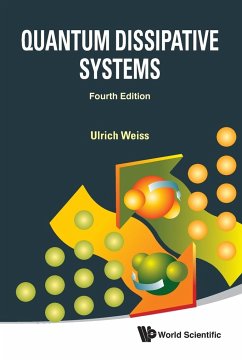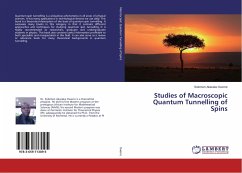The investigation of dissipative quantum systems makes it possible to observe quantum phenomena also on macroscopic length scales. The microscopic model selected allows to deduce and examine the so far only phenomenologically accessible effect of quantum dissipation in a clear mathematical and physical way. The investigated microscopic model is a 1-dimensional chain of harmonic degrees of freedom which are linearly coupled to each other as well as to r anharmonic degrees of freedom. The case of one respectively two anharmonic bonds are explicitly analysed. An analytic separation of the harmonic from the anharmonic degrees of freedom is accomplished in two different ways. The anharmonic potential is chosen as a symmetrical double well potential which allows the calculation of the transitions between the two minima by performing a Wick rotation. Eliminating the harmonic degrees of freedom is done via the well-known Feynman-Vernon path integral formalism.








